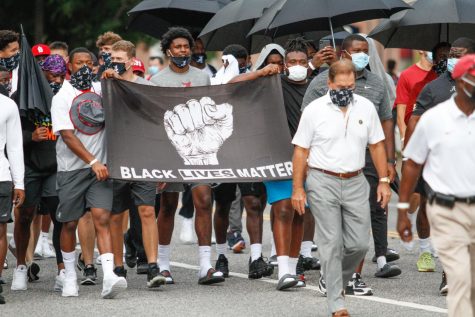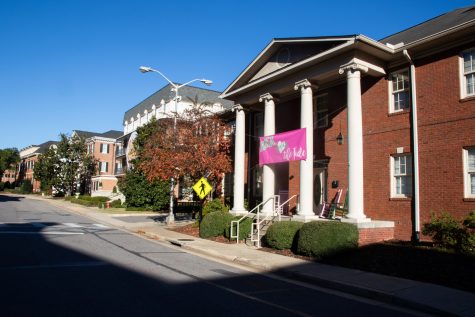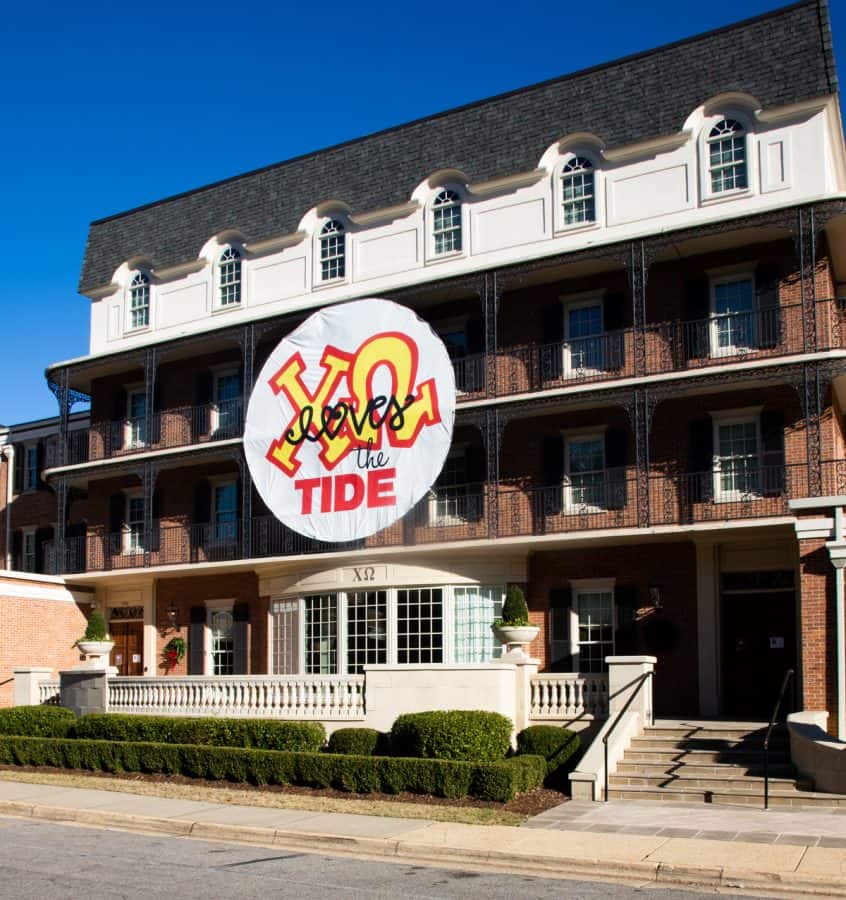The ‘Final Barrier’ still stands strong
Seven years ago, panhellenic organizations at Alabama were forced to integrate. But did it stick?
Read more from the Dec. 3 1956 Collab Edition.
Seven years after the Alabama Panhellenic Association (APA) faced pressure to integrate after not allowing Black women into their sororities, little diversity still exists in its chapters.
The APA released a statement on May 31 in response to the police killing of George Floyd and quoted Martin Luther King, Jr. in saying, “Injustice anywhere is a threat to justice everywhere.” They also stated the council is, “resolved to hold one another accountable and use our personal, organizational resources and platforms for positive change.”
In fall 2019, the University boasted more than 38,000 students, a tenth of whom identified as Black or African American, while three-quarters of the student population identified as white.
Whether these figures are compared to the national average or the state average, these statistics show an underrepresentation of Black people at the University.
According to the U.S. Census data, the state of Alabama’s population is 27% Black or African American and 69% white. By contrast, the nation’s population is 13% Black or African American and 76% white.
The University of Alabama saw a 0.5% increase in Black and African American student enrollment between 2018 and 2019. If this trend continues, the University would match the national average by 2026 and reach the state average by 2052.
Roughly one-third of the University’s student body belongs to a Greek organization, the majority of which are white.
Last year, about 1.2%, or 88, of the APA’s members identified as Black or African American, while 90% of the organization was white.
The claim on the official website about sisterhood, philanthropy and social engagement being a main focus of the APA seemed doubtful to one recent Black female graduate who wished to remain anonymous for her safety.
“The PHC is allowed to get away with its lack of diversity because no one is forcing them to correct their ways,” she said.
The anonymous source said she had only met one person in an “old row” sorority who wasn’t white, and she said she was only there to meet the diversity quota.
“The University will always lack proper diversity,” she said. “Look at its history that [administration] refuses to speak about. The PHC is part of that racist history that carries on today.
G. Christine Taylor, vice president and associate provost for diversity, equity and inclusion, said she does not agree with diversity quotas. To her, the issue runs deeper.
“I don’t know that the goal should necessarily be that if we have X number of women on campus we ought to have X number in those houses,” Taylor said. She said she would rather ask, “‘Do women have a choice and is their choice impacted by their race or ethnicity?’”
Taylor said that it is the University’s goal to increase the representation of diverse students on campus, but she can not predict percentages because of “various factors.” She declined to comment on whether Black women seek out other Greek systems because of the APA’s lack of representation.
The University’s Division of Diversity, Equity and Inclusion has instituted 1,695 active diversity efforts in the last five years. The division’s website claims there are more than 1,000 diversity-related classes offered at the University.
According to aggregated data from the University, there are currently 88 Black women in APA sororities. Spread across APA’s 19 affiliated organizations, each house would average 4.6 African American members. The UA Division of Strategic Communications refused to provide statistics for demographics of each APA sorority, citing FERPA in response to The Crimson White’s open records request.
History of Incidents
In 2013, the APA was called out for racist practices for barring the membership of two Black women who exceeded the values and requirements of the sororities they rushed. Following those revelations, the recruitment process was extended and 14 minority women were invited to join sororities. Overall, 10 Black women were accepted that year.
Four years later, Harley Barber was accepted to Alpha Phi. In January 2018, videos of Barber’s racist rants day went viral on Martin Luther King Jr. Day, which led to her expulsion from the sorority and her departure from the University.
In one video Barber said, “I love how I act like I love black people because I f—ing hate [N-word].”
In 2015, Alpha Phi was called out by USA Today for a recruitment video that showed almost exclusively white women with blonde hair. In these videos, blonde women wore bikinis and Daisy Duke shorts and were criticized by an AL.com writer for being “racially and aesthetically homogeneous.”
The prioritizing of legacies in Greek life poses another challenge. Legacies are new recruits who have special consideration over others due to a member of their family being a member of the organization in the past.
Black students were not admitted to the University until 1956, and APA sororities are documented as denying potential members based on race as recently as 2013. Overvaluing legacy candidates gives the white relatives of past members an unfair advantage over non-white students seeking membership in the organization.
“These groups aren’t meant for diversity and I don’t expect them to be,” the anonymous alumna said. “But I do expect them to be held accountable when they’re saying racist things on Snapchat and finsta [a secret Instagram account] and get to prance around the campus with no repercussions.”










